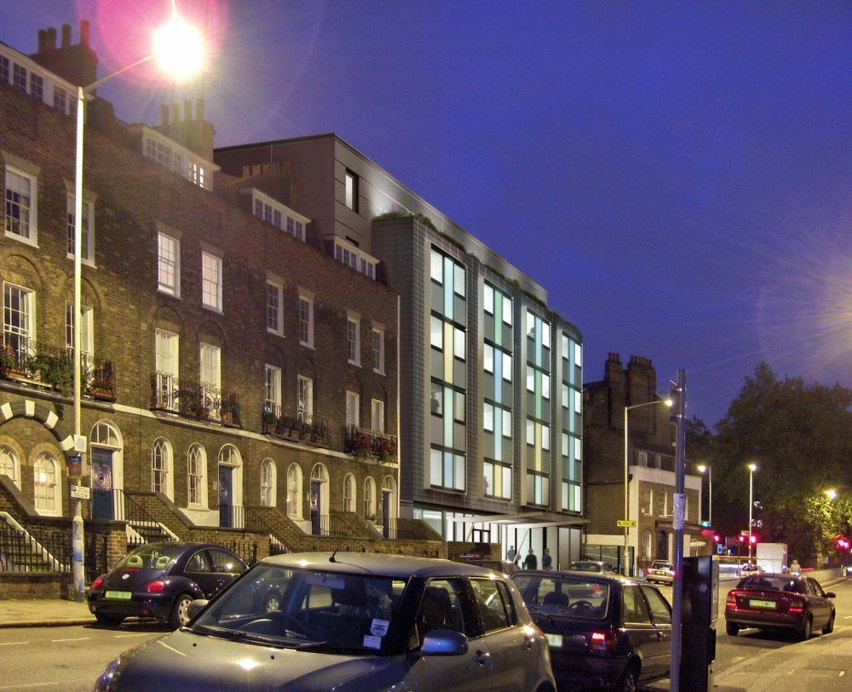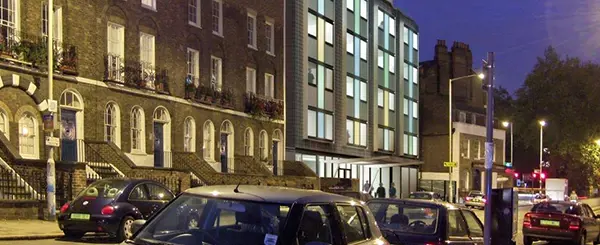A new form of housing has emerged across London and the UK in recent years. Co-living, as the name suggests, is a type of community housing in which residents share facilities such as kitchens, bathrooms and living rooms. Recently, they are generally large-scale, purpose-built shared facilities, primarily for young professionals. The Collective in the London Borough of Ealing, for example, contains 550 rooms, and is said to be the world’s largest co-living building.
Amongst other benefits, co-living developments offer a high concentration of bedrooms in a period of significant housing shortage in the UK. However, concerns from planning authorities have been expressed over lack of affordable units and residential quality. As such, greater weight to material considerations such as design and operation are being applied within local and regional policies, which future proposals need to consider. However, to realistically contribute to a holistic answer to housing issues, co-living facilities may need to refocus their role in the solution completely.
Shared living at The Collective, Old Oak
Source: The collective
Co-living has many benefits which have helped grow its popularity with developers and residents alike. The units offer short-term and flexible accommodation, and links are often drawn between mental wellbeing and the increased social engagement of shared living (though there are limited studies to support this). From a planning perspective, it can potentially offer further benefits.
Though co-living currently accounts for a very small proportion of overall housing stock, its potential to deliver a significant volume of homes is often stated (see articles from The Guardian and CityMetric)
[1]. Co-living communities create a lot of capacity in a small space, with the Collective offering over 500 bed spaces in roughly half a hectare of land. Buildings such as student halls and office spaces have been re-purposed as co-living accommodation, which removes the need for new land or demolition and reconstruction.
However, the prospect of co-living contributing to a holistic solution to housing issues is currently probably limited. Perceived problems over high pricing raises a possible stumbling block to accessibility for many. In the Collective, rooms start from £245 a week. Further, an application in Redbridge was considered affordable to individuals who earn approximately £35,000 per annum.
Space is also more restricted than typical residential standards, with the Collective stating that an en-suite room with a small double bed comprises 9.2 square metres, with access to a shared kitchen of 5.8 square metres. By comparison, the Technical Housing Standards (2015) set out that a double room should have a minimum area of 11.5 square metres. The counter argument is that co-living developments provide extensive communal space beyond the bedrooms, raising the question as to whether typical residential space standards should apply.
This uncertainty over use class has meant that authorities have previously lacked sufficient statutory means to properly consider co-living proposals. Typical housing policy includes standards on matters such as affordability and space. However, co-living developments do not fall under standard residential use classes and are instead considered sui generis, facing less defined policy measures.
For example, although the Collective agreed 30% of rooms at sub-market rent with LB Ealing, it was noted in the Committee Report for the application that ‘given that this is not a traditional housing scheme and is accommodation that would fall within Sui Generis, there is no policy requirement for affordable housing on this site’. The GLA stated in a report for a referred co-living scheme that ‘it is accepted that the residential standards are not strictly applicable to the type of housing proposed’, highlighting the vagueness of relevant use class.
To address the ambiguity, the GLA are responding to standards issues by exercising greater weight to material considerations for co-living applications. The emerging London Plan contains a draft policy considering ‘large-scale purpose-built shared living’. The policy requires developments to, amongst other criteria, be of good quality, have 3-month tenancies as a minimum, and provide affordable housing contributions. In assessing proposals, there is evidence of greater scrutiny of how standards are applied.
This is shown in a recent application for a co-living development in Redbridge. The scheme demonstrated that it exceeded required minimum standards for private living. However, the GLA stated that the approach was ‘unacceptable as the proposed co-living product is not a typical residential environment and is not considered comparable to a typical house share’. It was determined that the application did not comply with the emerging London Plan due to the size of the units and quantum of communal facilities.
Local Authorities are similarly beginning to incorporate policies concerning co-living in their emerging Plans, with Hackney, Lambeth and Westminster being examples, which may influence development. While the GLA Housing Standards Review (2015) found that space standards had not had a discernible negative impact on housing delivery in London, increased considerations may lead to more protracted negotiations between developers and the Authority
[2]. With focus increasingly on quality of facilities over quantity of units, the current large-scale format will remain challenging to developers and the authorities alike.
To realistically contribute to a holistic solution to housing issues, co-living developments may need to adapt their proposition to refocus on affordable accommodation and support for low-income young people. The non-for-profit Hyelm model successfully provides well-sized rooms at sub-market rates. Further, they offer personal development support to help residents rehouse into permanent accommodation when their tenancy ends. Their flagship development in Old Street, LB Hackney, provides housing for 125 young people who are in employment or training, but who cannot afford to rent or buy in the private sector.
The model recognises tenants needs and provides social support such as information and training in financial management, budgeting and other social, health and welfare issues that affect young people. The success of the Old Street development has led to a new project to provide housing and services for 154 young people in Colindale, North London, which has received positive feedback from LB Barnet and the GLA alike.
Hyelm, Old Street

Source: The Hyelm Group
Co-living developments offer benefits such as flexible living and social interaction, and can deliver high density accommodation in central locations. As such, these developments have a part to play in easing the problems associated with the housing crisis. While in the wider scheme of emerging development it is likely to only play a small part, there is no doubt that co-living can add to the mix of accommodation available and serve a growing market, especially in our larger cities. In doing so, they could help to ease pressures on the housing stock elsewhere. However, to achieve this, developers will need to react to more stringent tenure, space and affordability requirements, while potentially refocusing their role to support young people in the housing market.
[1] Can 'co-living' solve millennials' housing woes?; and
Here are five lessons on the future of co-living
[2]Housing Standards Review: Evidence of need





